7 Living Room Decor Trends in 2025 – Design Ideas for a Modern Home
-
Codee Chessher
- Last updated:
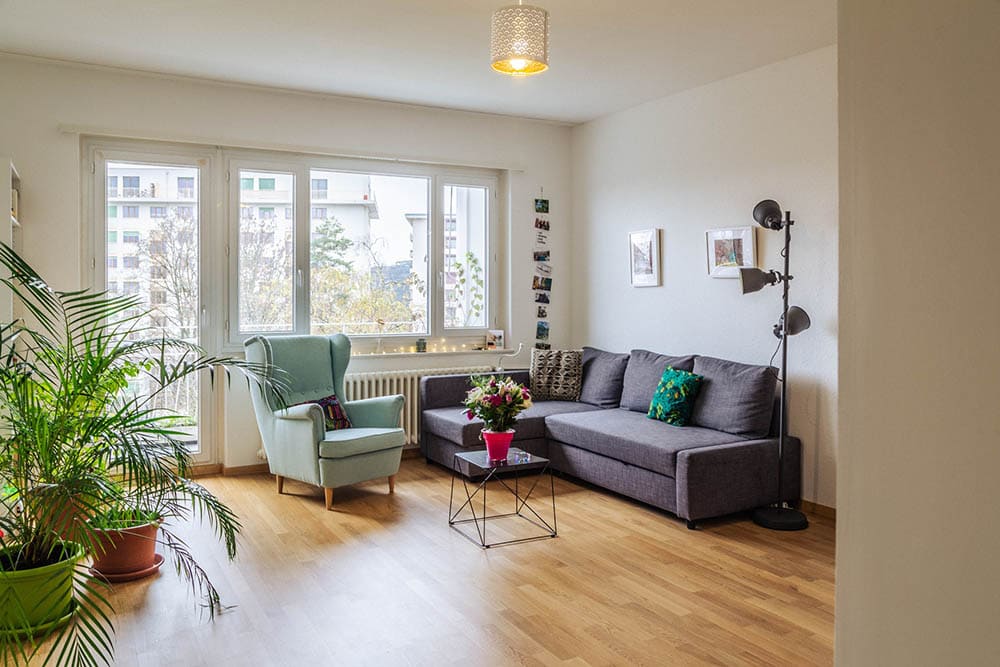
Home design trends vary from year to year, and it’s always exciting to see which themes will surface in upcoming seasons. Living rooms are seeing a resurgence of old favorites, but brand-new designs are also gaining traction. Whether you prefer traditional or modern designs, you can find a design scheme that enhances your living room. Let’s dive into some of the trendiest new living room decor ideas.
Top 7 Living Room Decor Trends in 2025
1. Tons of Texture
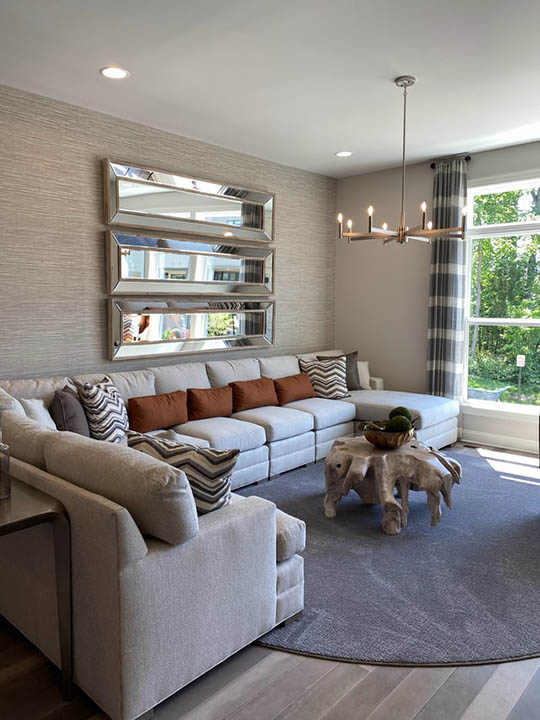
Using various types of textures together creates a luxurious, tactile paradise. The best part about using textures is that there are just so many to choose from. Distressed hardwood floor has a unique feel, and everyone loves a homemade blanket. Create visual and tactile contrast by using mattes and glosses, rough items, and soft items.
The key to texture is balancing it. Too much will make your living room feel cluttered, dangerously teetering on the edge of cluttercore. Before you begin, think about what feel you want your living room to convey. If you want an overall soft, matte space, try adding a glossy table with hard edges to add visually interesting contrast.
2. Natural Colors
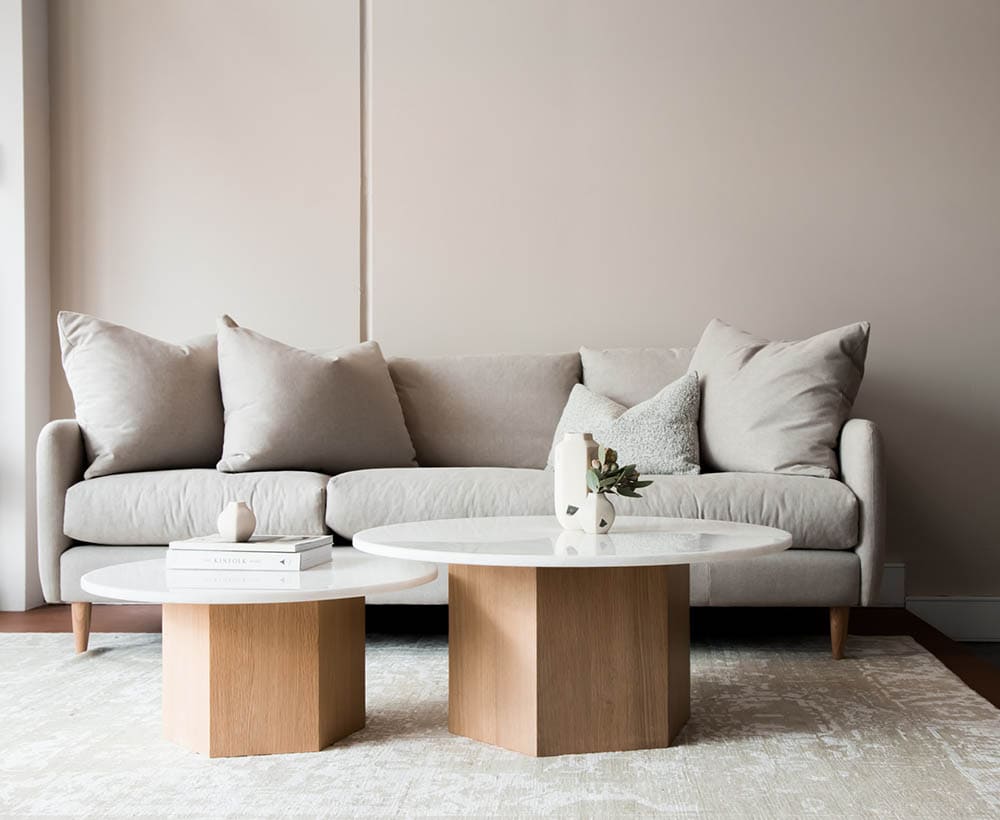
Spending time in nature is proven to enhance mental and emotional well-being, and COVID lockdowns deprived many people of that. So, it’s no big surprise that people sought to emulate nature in their own homes. This includes lively green shades as well as earthy tones like tan, beige, and terracotta.
Combined with biophilic design, which we’ll cover soon, designing your living room with natural tones reinvigorates people’s connection to the outdoors. Consider forest-green walls combined with soft beige or chocolate furniture for balance or mixing shades of green to create a more lively atmosphere.
For a more earthy, neutral space you can go with popular colors like terracotta or Venetian red, which are awesome base colors to build off. Olive green, in particular, pairs beautifully with both of those shades.
3. Strategically Placed Mirrors
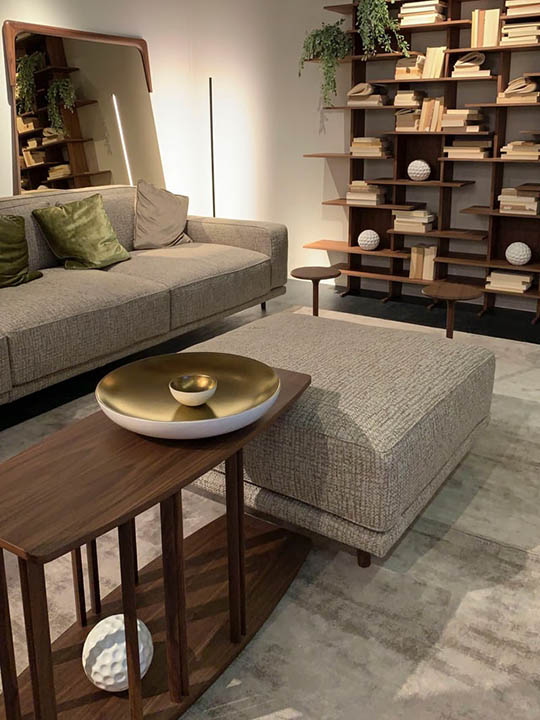
Using mirrors to bounce around natural light and make a space feel more open is an old trick, but an effective one. For living rooms with lots of windows and natural light, one of the easiest ways to brighten up the room is to add a few mirrors. Ideally, you want to place them in corners that get the most light so they project sunlight all over the space.
Mirrors make rooms feel larger, which is terrific for any size living room. Larger rooms seem even larger, and even relatively small living rooms feel more expansive than if they had no mirrors.
To make the most of your mirrors, you should use light colors that benefit from natural light, and stay away from dark colors like brown and black, which suck the light from their surroundings. Sky blues, emerald greens, or sunny yellows are excellent ideas.
4. Biophilic Design
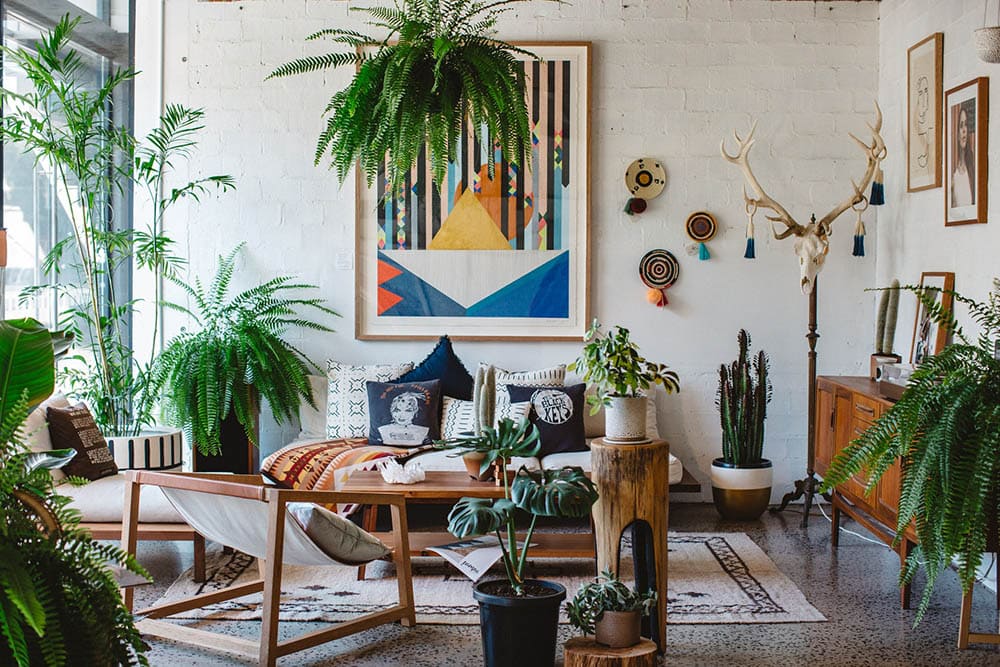
Using plants in our living space helps renew our connection to nature, similar but even more effective than using greens in our paint and furniture. Indoor plants are proven to improve your mood and reduce stress, plus they just look pretty in general.
There are many styles you can use to achieve a strong biophilic living room: many small plants, or even making one large plant a focal point of visual interest in the space. Try mixing and matching various types of plants to see if they’re for you. You could always put them outdoors if they’re not the right fit for your living room.
If you have little interest in the hassle of keeping up with watering and providing plant nutrients to your interior flora, opt for low-maintenance plants. For example, some great interior plants are aloe vera (useful for sunburn, too!), snake plants, rubber plants, and succulents. For the most part, you just need to water them every now and then and they’ll be fine.
For even more focus on sustainability and nature, use planters made of natural materials. We’re talking jute, ceramic, and hemp.
5. 3D Art
To inject some playfulness into your living room, look into adding some 3D art or creating a feature wall. Anything that pops off the wall will help break up an otherwise dull and uniformly painted wall, enhancing every other wall as a result.
3D art can take many forms to fit any lifestyle. 3D paintings, homemade crafts, and sculptures are all fair game. To enhance your art, use accent lighting to generate intriguing and whimsical shadows, or use contrasting furniture to break up the room.
Play with different types of art to find what suits your living room the best. You can choose to design your room around your art with a feature wall. A more budget-friendly option that suits to spice up your existing living room is to find art that suits your room’s unique character and atmosphere.
6. Sustainability
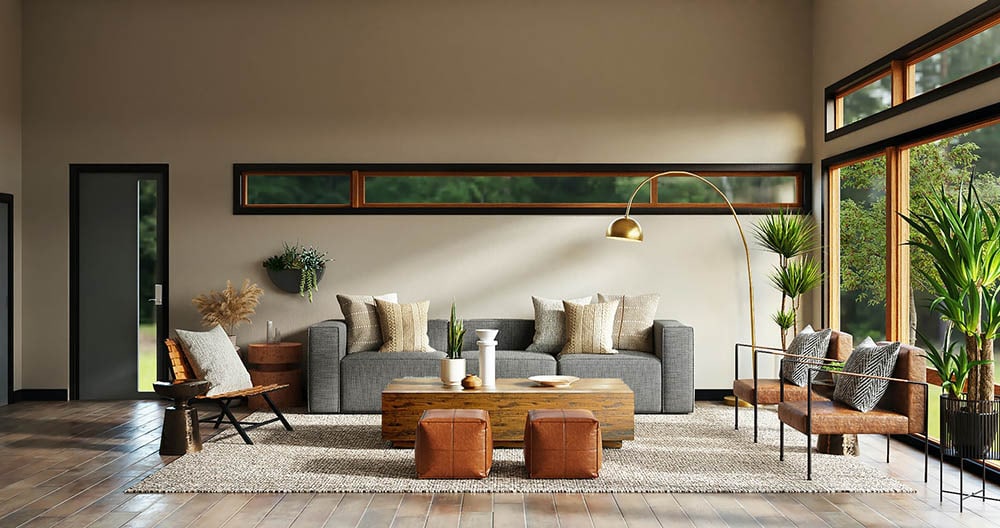
Ever since the ravages of the COVID pandemic began, people began focusing on sustainability in their everyday lives. Being sustainable can take many forms: it’s as easy as repurposing old furniture instead of buying new overpriced pieces, or making sure that furniture is responsibly sourced. For example, ensuring that hardwood furniture was sourced from a renewable forest and not an old-growth forest.
Other materials that improve your living room’s sustainable ‘it’ factor include jute planters, reclaimed wood or stone, bamboo, and clay. Between those materials and the many other alternatives, you have myriad ways to customize your living space while remaining environmentally friendly.
You don’t have to go all-out with sustainability, and that’s what makes it so useful. You can use as many or as few sustainable materials and practices as you want, so long as it remains useful for your living room.
7. Refurbishing & DIY
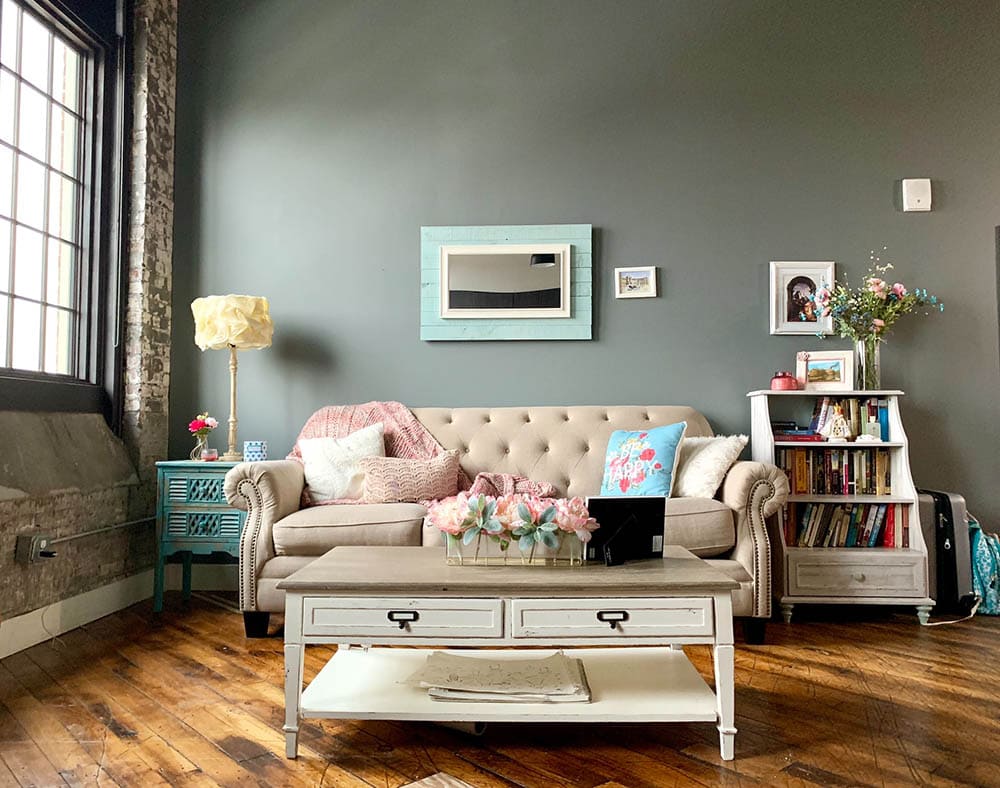
With supply chain issues making new furniture expensive or unavailable in many areas, people are looking to their old furniture to help round out their living rooms. 1970s furniture, in particular, is becoming popular as people use DIY skills to repurpose old furniture to fit modern sensibilities.
Repurposing furniture helps maintain a focus on sustainability, and it helps your budget, too. DIY is becoming huge as we go into a new year as it develops practical skills, and really, what’s better than sitting on an old couch you just upholstered yourself?
The best part about this kind of comeback is that refurbishing and DIY skills are extremely useful for all areas of the home. Kitchen and bedroom furniture aren’t that different from living room furniture, as it turns out!
 How To Choose What Trends Are Right For You
How To Choose What Trends Are Right For You
It can be overwhelming to read all those and wonder how you could possibly put all of those design trends into your home. The good news is that you don’t have to! Even just one or two of the entries on our list can help transform or even just enhance your home. To help you decide what would be most useful for your living room, ask yourself a few questions.
These questions are:
- What feel do you want to create in your living room? Open and airy, or den-like and cozy? For the former, add a mirror or two to really make use of the existing natural light. For the former, consider adding some strategically placed 3D art to keep the atmosphere from becoming oppressive.
- Do you want to completely change your living room? Slap some green paint on a wall or two and add some houseplants to make an immediate difference. You’ll feel more at ease as you feel closer to nature in the comfort of your own home.
- Are you handy? If you are or are interested in learning, DIY refurbishing is an excellent way to repurpose old furniture to fit your existing living room. You’d be surprised how reupholstering an old sofa completely changes how it fits in your home.
- Do you just need some spice without a big price tag? Add textured layers to your living room. Use the contrasts of soft and coarse, rounded furniture and hard edges to your advantage. Alternating gloss and matte paint or furniture is another way to spice it up.
See Also:
- 8 Small Living Room Interior Design Trends
- 8 Danish Interior Design Ideas (With Pictures)
- 8 DIY Wall Décor Ideas You Can Try Today
Featured Image Credit: Kyoshi Reyes, Unsplash
Contents
